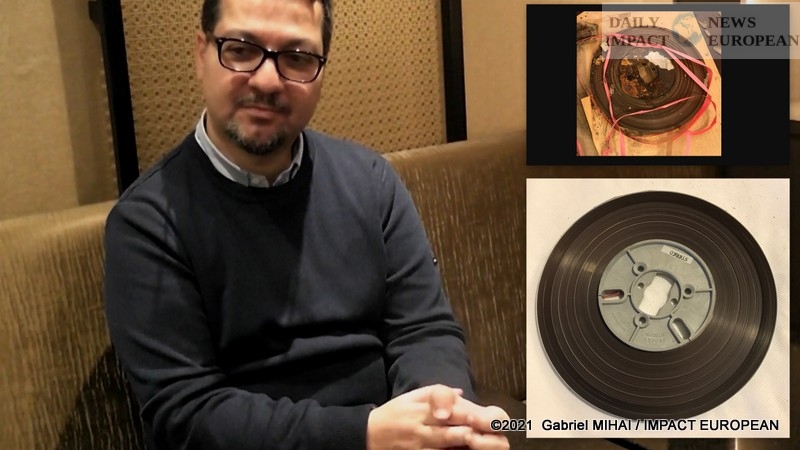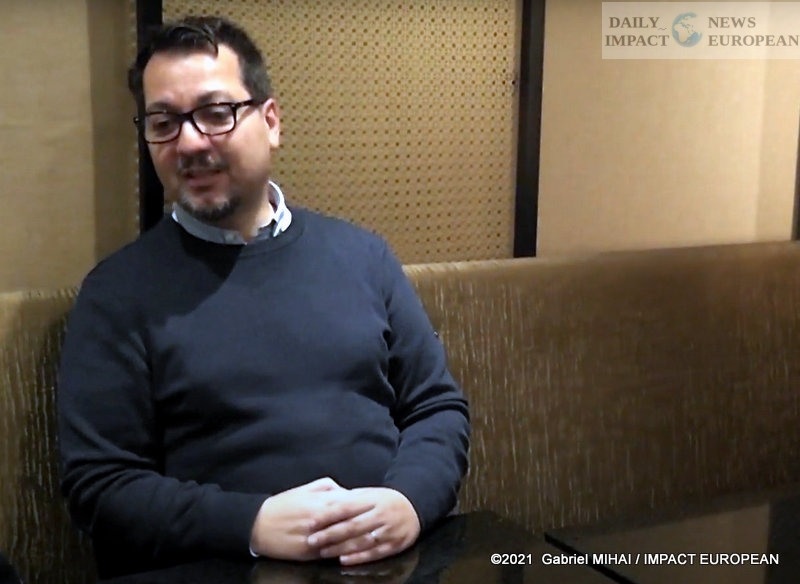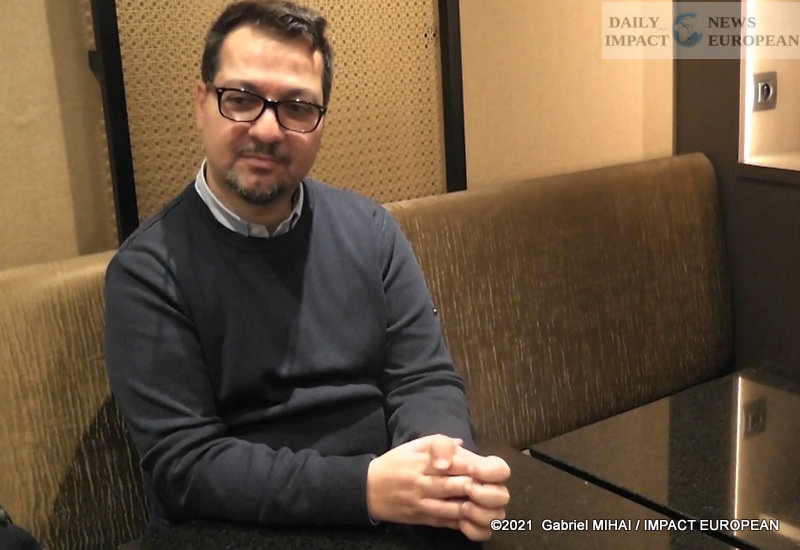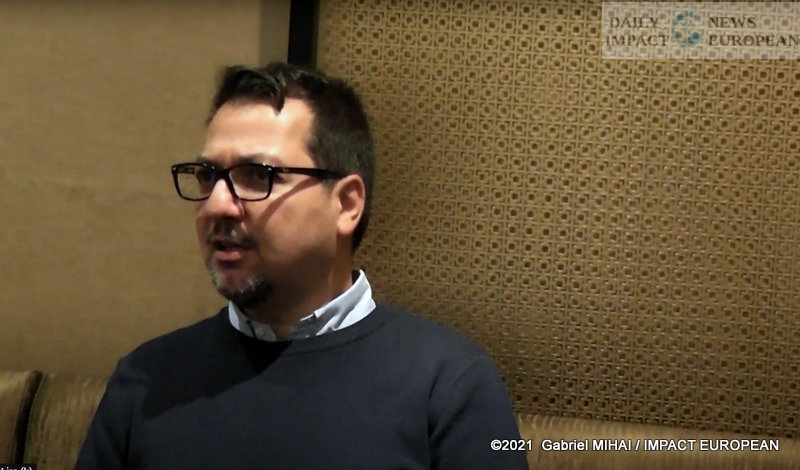The mission of the United Music Foundation is to safeguard, promote and make available to the public any recorded musical heritage threatened with disappearance. Established in Geneva in 2013, the United Music Foundation is recognized as being of public utility, non-profit and tax exempt.
How to save the music of the years 1930 to 1980 in 15 years?
David Hadzis is the project manager of the United Music Foundation, which safeguards musical heritage to prevent their disappearance.
Explaining that the studio’s original media are threatened, from some points of view:
- because the media and devices are no longer in production, in order to be able to read them correctly;
- damage due to storage and conservation;
- know-how is on the verge of extinction.
“I have not worked to save a willful artist, I am working to recover a repertoire and its tapes on the verge of deterioration and loss of a precious musical heritage.”
When we decided to transmit to the public certain works such as: Nicole Croisille, Petula Clark, Sidney Becht, several of a hundred artists, I try to give them a long life and not a very limited lifespan, by saving them digitally.
By saving the music that is about to be lost, we offer the possibility for future generations to discover the artistic cultural heritage but also the possibility for today’s generation to have the pleasure of listening to music in digital because we have advanced technologically. Not all audiences like the “Star Academy”, the audience is different, everyone has their own kind of music, who like to listen to their favorite music since their youth.
But to recover some tapes from the 70s and 80s, you have to heat them, but first of all you have to make sure that the tape is readable, otherwise it will be restored.
What are the methods and what are the chances of not losing a recording on a disc or magnetic tape?
There are several techniques to restore it, which allows it to be heard on a tape recorder, at the level of certain tapes which are from the 70s and 80s that need to be heated in an oven to remove the humidity due to its chemical composition. . When we realize that it is not lost, and that the only way to transfer them is to heat them in an oven.
A certain temperature is used to protect the magnetic tape and in some situations the tape peels off and we have to stick them.
Regarding the tape in the studio, there was recording and re-recording after which the tape was stuck with tape to which the adhesive peels off after a while, after having restored the tape to good condition. operation we digitize it, but certain techniques must be observed, running speed and aligning the head to digitally reproduce the original sound.
The resolution of a digital file is worked in a maximum capacity and not in a low resolution in order to have a digital quality sound, the minimum is 24 bits – 96kHz, having a working background like a minimum mp3.
A magnetic tape has a working process of at least 6 months of recovery, taking into account the means of recovery in case it needs to be put in the oven, alignment of heads, cleaning of impurities and carrying out assembly, but once this time has elapsed it is well done, the resulting file can be copied quickly and without limits. Succeed in being technologically advanced and being able to move from the same technology to that of tomorrow, at the IT level.
As for the “acetate” tape is not perennial, the bands are deformed, in what I worked I had the opportunity to find the tape with the hole in the oxide, where I made a slalom with playheads to recover what I could.
Polyester tapes in general in my experience are generally very good, but it all depends on how they are kept, any tape can be damaged, for example “one can be collected from water and saved and another from ‘a wet and lost place’. I do not know why?
“Today, in order to better safeguard the music that is about to be lost, I use new technological methods, I work a lot with hard disks, but also with LTO (Linear Tape-Open) tapes, in making frequent copies. “
Why is UNESCO giving us 15 years to save musical heritage?
According to UNESCO, countless invaluable audio documents have already been permanently lost, and we only have 10 to 15 years left to safeguard the audio-visual documents in order to prevent their disappearance.
Music occupies a prominent place within the Intangible Cultural Heritage (ICH) of humanity as listed by UNESCO since its Safeguarding Convention of 2003. More broadly, beyond the United Nations, “intangible heritage »Seems to have become the dominant paradigm in the actions of heritage and promotion of musical practices on an international scale.
The majority of the studies gathered here are concerned with practices inscribed on UNESCO’s lists, which are the subject of safeguarding programs that have been in operation for several years. These “post-heritage” situations are examined in their diversity.
Considering that the music industry has evolved from year to year depending on the physical media used in the studio or in the production of an album depending on the period and technological evolution.
- 10 years for the period 1930-1950 (disc and magnetic tape);
- 15 years for the period 1950-1980 (disc and magnetic tape).
The evolution of physical media in the music industry
During the 1930s and until 1980, the disc was used for recording, with a difference in technology from one year to another depending on the evolution of the music industry.
Electric recording (78 rpm):
- a rather particular format, because this disc of 16 inches (40.5 cm) in diameter was used a little apart. These discs were mainly used to record radio broadcasts. Some important historical events, such as the LZ 129 Hindenburg disaster, as well as the battles that took place during World War II, have been recorded on the “Transcription Disc” but also on the music albums.
- also called ‘dubplate’, the acetate disc is today mainly used in mastering studio. Before 1934, these discs were made of cellulose acetate. These records, typically 25 cm (10 inches), are less durable than vinyl or shellac records and have a shorter life than these other materials.
- the birth of the LP LP record 33 rpm (33 rpm 1/3). Introduced to the market by Columbia Records in 1948, it didn’t take long for the recording industry in general to embrace this format, and the vinyl record hasn’t really changed in almost 70 years. Frank Sinatra was the first artist to release in this format, with a reissue of The Voice of Frank Sinatra, released two years earlier in 78 rpm.
Magnetic tape recording:
- Mainly used by sound professionals, record companies have tried to sell albums on tape, but without much success. Nowadays, this type of device is largely confined to mastering studios.
How long does it take to digitally recover a disk or magnetic tape?
It can take anywhere from 6 months to 2 years to recover a tape or disk, depending on its retention.
For Sidney Bechet’s “box set”, it took me 2 years of work to build:
- 4 CDs of rare or unpublished recordings;
- 250 photos and 140 rare or unpublished documents;
- A bilingual French / English book of 216 pages in art book format 30 x 30 cm;
- Prefaces by Daniel Bechet, his son, Bob Wilber, his pupil, and Claude Wolff, his manager;
- Story by Fabrice Zammarchi with the collaboration of Roland Hippenmeyer, the artist’s biographers;
- Unpublished interviews with witnesses to Sidney Bechet’s visits to Switzerland.
These recordings, mostly unpublished, were saved in high resolution (minimum 24 bits 96 kHz) from the original tapes or the best copies available.
This project was carried out in collaboration with various private and public archives, including the RTS, which made the original media available to us (magnetic tapes, 78 rpm acetate discs, photos, documents, etc.).
AWARDS AND RECOGNITION
Berne, October 27, 2014:
- Memoriav Prize – Swiss Commission for UNESCO 2014 for the best Swiss initiative for safeguarding or enhancement carried out within the framework of World Day for Audiovisual Heritage.
Paris, January 19, 2015:
- Prize for the Best Reissue 2014 from the Académie du Jazz.
The history of music is written every day, in studios, concert halls or elsewhere. The sound recordings are the only trace that remains.
Sound recordings have a very limited lifespan due to:
- physical and chemical degradation of audio media,
- the obsolescence of technical equipment,
- the disappearance of know-how.
It is this heritage that the United Music Foundation aims to safeguard and transmit.





More Stories
METAL D’ALCOVE, the workshop of Eric KATZ, lighting sculptor in Montmartre
Paris Marathon 2024: Victory for Ethiopians at the Paris marathon
Gelsomina